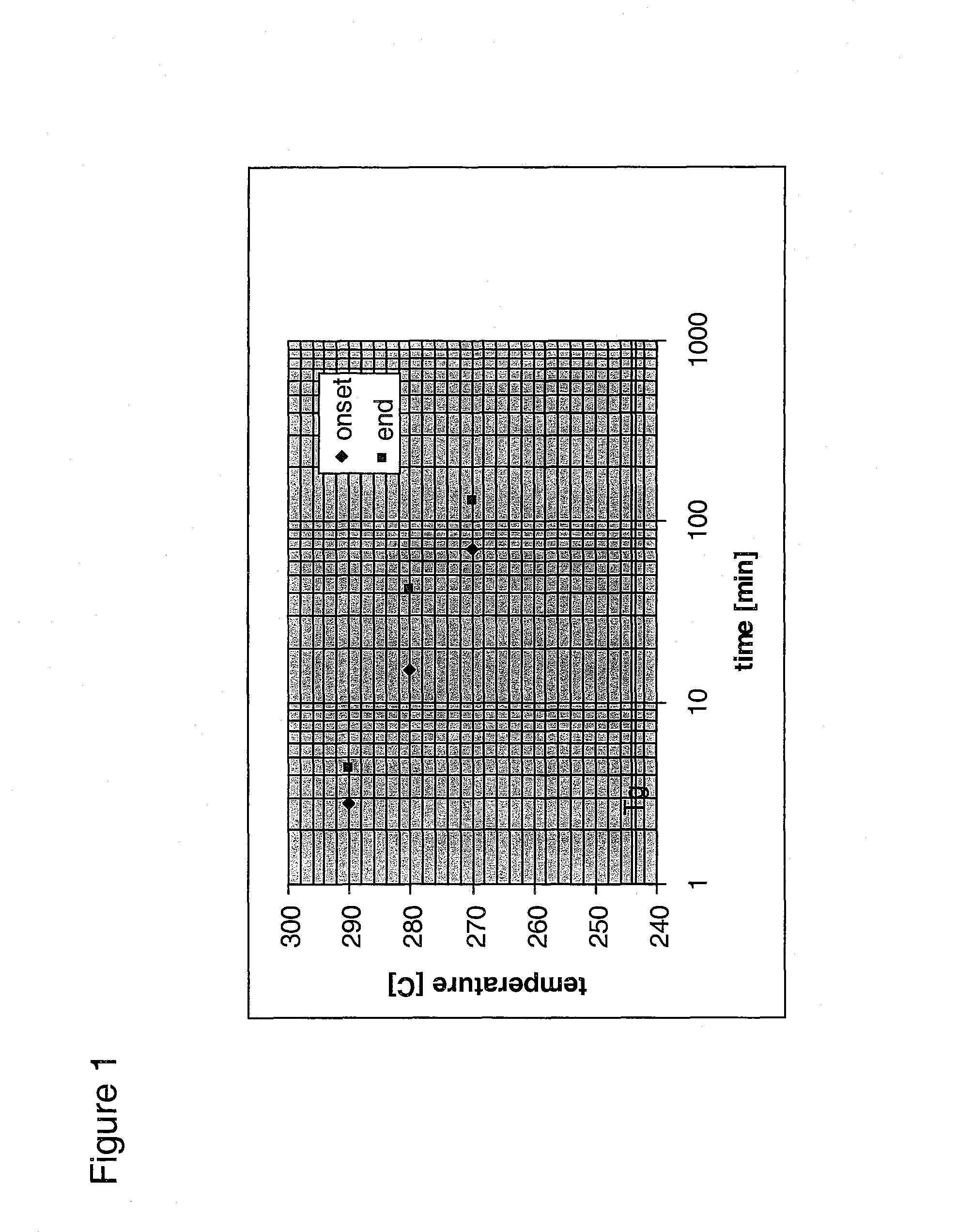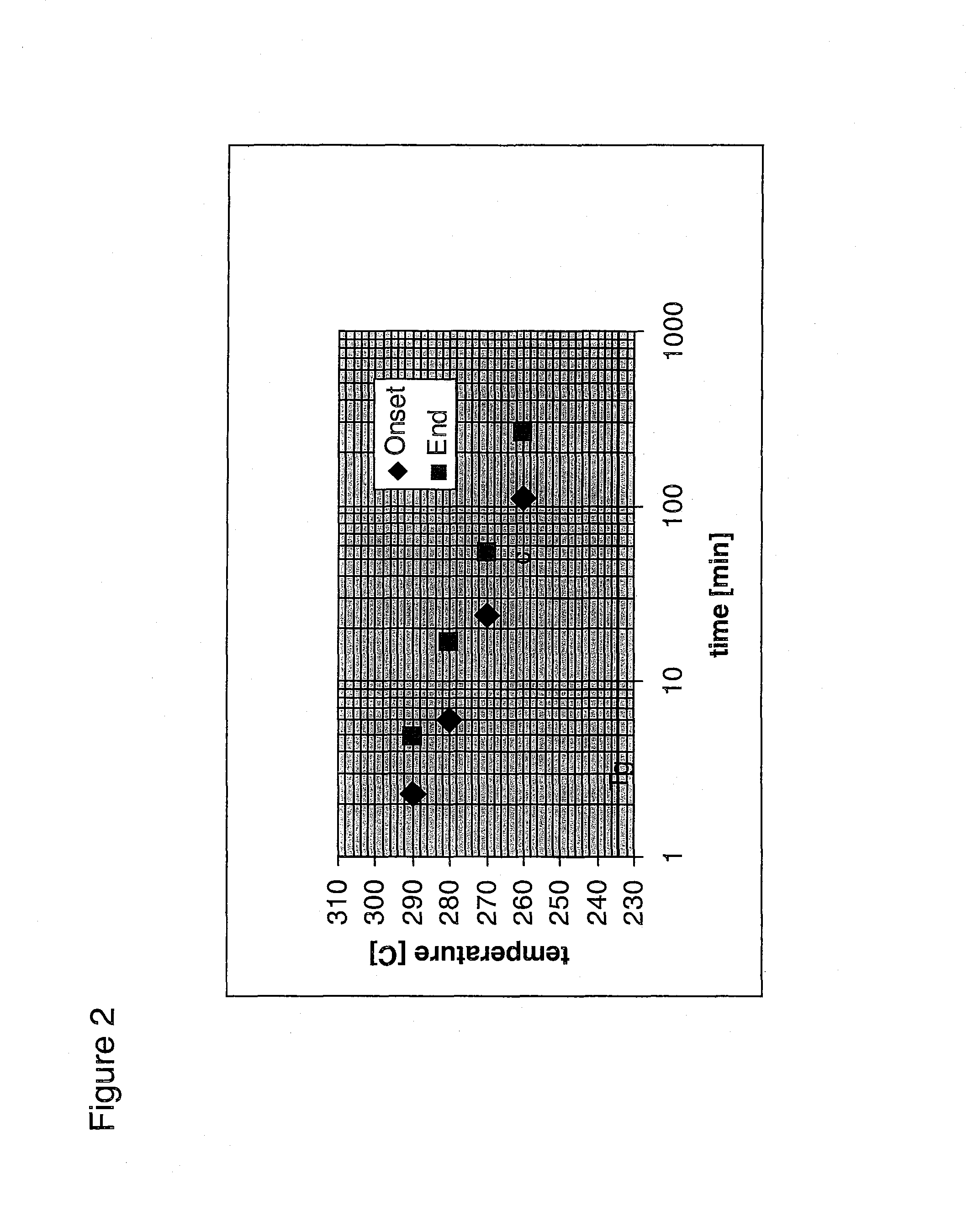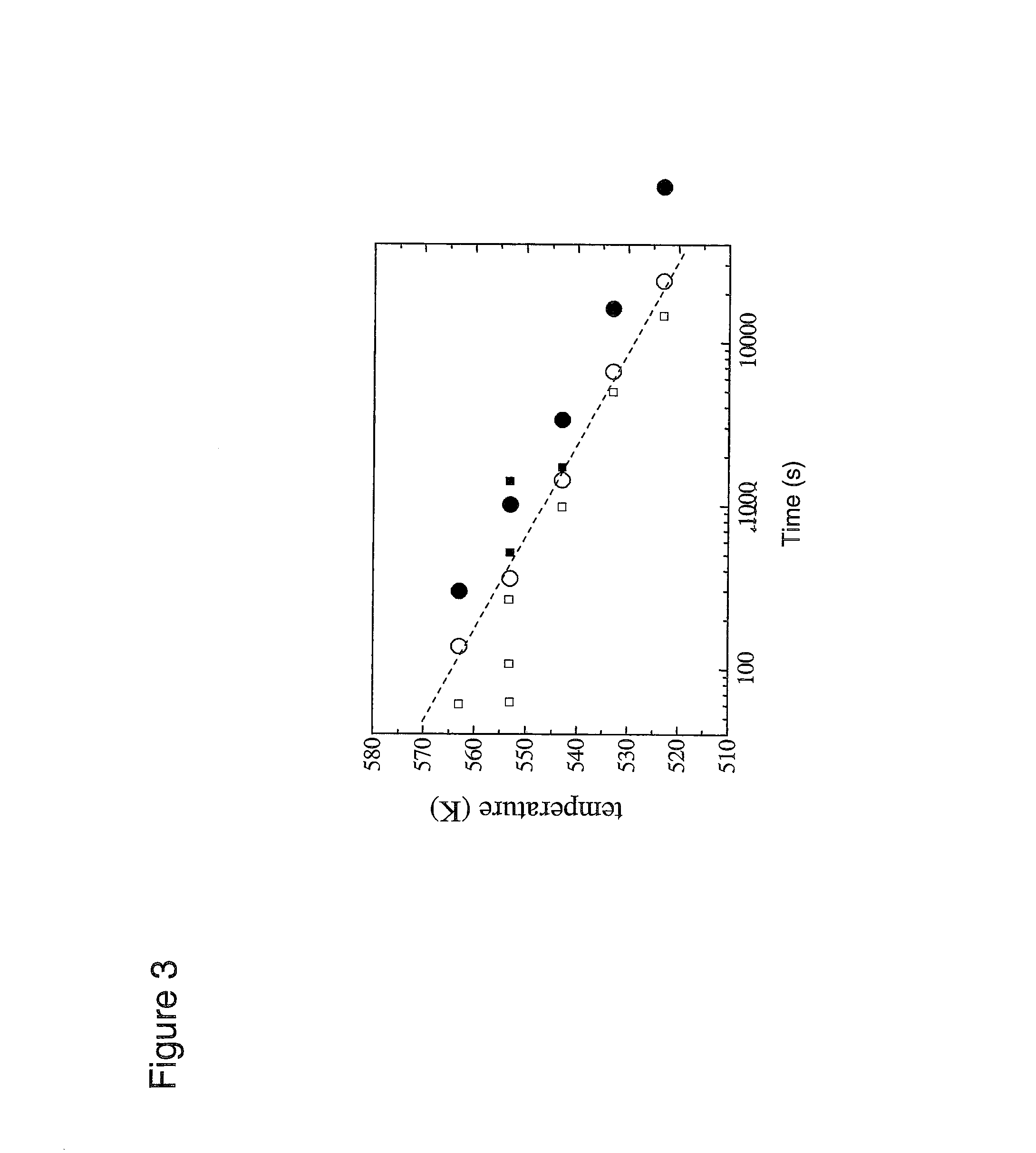Bulk solidifying amorphous alloys with improved mechanical properties
a technology of amorphous alloys and mechanical properties, applied in the field of bulk solidification of amorphous alloys, can solve the problems of limited processability of amorphous alloys, inability to extract heat from thick sections, and limited thickness of articles made from amorphous alloys, so as to improve processability and mechanical properties
- Summary
- Abstract
- Description
- Claims
- Application Information
AI Technical Summary
Benefits of technology
Problems solved by technology
Method used
Image
Examples
example 1
Highly Processable PT-Base Alloys
[0126]The following alloy compositions are exemplary compositions for highly processable Pt-based alloys with a Pt-content of at least 75 percent by weight. The glass transition temperatures, the crystallization temperature, supercooled liquid region, liquidus temperature, the reduced glass temperature Trg=Tg / TL, the Vickers hardness number, the critical casting thickness, and the alloys density are summarized in Table 1, below. In addition, x-ray diffraction was utilized to verify the amorphous structure of all four alloys.
[0127]FIG. 1 shows the time temperature transformation diagram of the Pt44Cu26Ni9P21 alloy. This diagram shows the time to reach crystallization in an isothermal experiment at a given temperature. For example, at 280° C. it takes 14 min before crystallization sets in. At this temperature the alloy can be processed for 14 min before it crystallized. Bulk solidifying amorphous alloys, however have a strong tendency to embrittle duri...
example 2
High Ductile Strength PT-Base Alloys
[0141]In another exemplary embodiment, an alloy having a composition within the Poisson's ratio of 0.38 was formed to test the improved ductile properties of the inventive materials. In this embodiment the alloys had a composition of substantially Pt57.5Cu14.7N15.3P22.5.
[0142]In a first test, bar shaped samples with dimensions of 3 mm×3 mm×6 mm were machined for quasi-static ({dot over (ε)}=10−4 s−1) compression tests. FIG. 4 shows the stress-strain curve of a Pt57.5Cu14.7Ni5.3P22.5 sample under compressive loading. Initially, it behaves like a typical B-SA Alloy, exhibiting an elastic strain limit of less than 2% at a yield stress of 1400 MPa. However, after reaching the maximum strength of 1470 MPa, the material deforms in a perfectly plastic manner. This has never been observed for B-SA Alloys which typically fail before any observable plastic deformation occurs. The plastic strain to failure was found to be 20%.
[0143]Samples were polished prio...
PUM
| Property | Measurement | Unit |
|---|---|---|
| thickness | aaaaa | aaaaa |
| Poisson's ratio | aaaaa | aaaaa |
| thickness | aaaaa | aaaaa |
Abstract
Description
Claims
Application Information
 Login to View More
Login to View More - R&D
- Intellectual Property
- Life Sciences
- Materials
- Tech Scout
- Unparalleled Data Quality
- Higher Quality Content
- 60% Fewer Hallucinations
Browse by: Latest US Patents, China's latest patents, Technical Efficacy Thesaurus, Application Domain, Technology Topic, Popular Technical Reports.
© 2025 PatSnap. All rights reserved.Legal|Privacy policy|Modern Slavery Act Transparency Statement|Sitemap|About US| Contact US: help@patsnap.com



